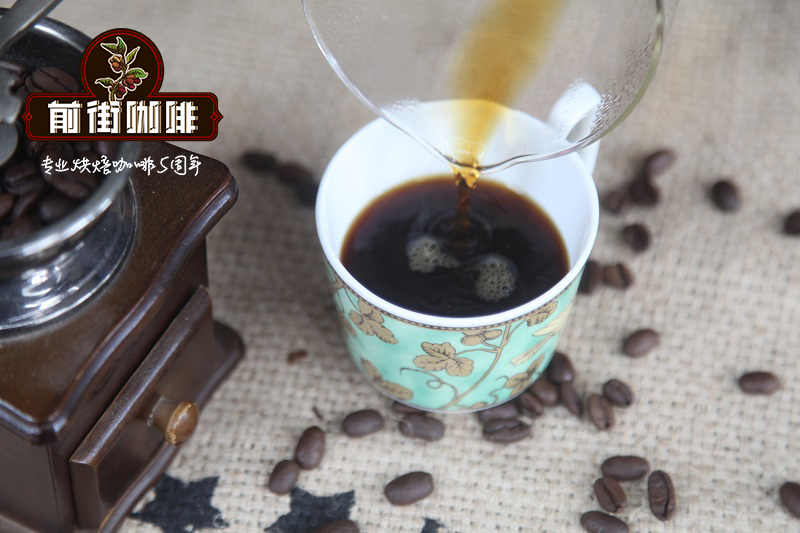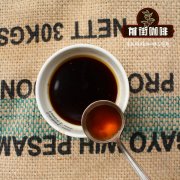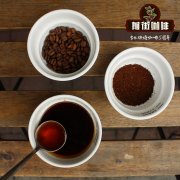Design principle and evolution of Melita filter cup: how to use several holes of Melita filter cup?

、
Professional coffee knowledge exchange more coffee bean information please follow the coffee workshop (Wechat official account cafe_style)
When it comes to Melita filter cup, most people's first impressions of him should be:
1. The representative of single-hole first-line filter cup
2. The inventor of filter paper filter cup
Many books or online information have written about how Mrs. Melitta Bentz invented the coffee filter cup on a whim from her son's homework paper, which has influenced the coffee industry for more than a hundred years, but the melitta filter cup is definitely not just a single-hole filter cup representative, each of his filter cups can be said to be a classic at that time, the following is a brief list of the evolution and period of the melitta filter cup, followed by pictures for everyone to enjoy.
1908 the first brass filter cup was born.
1910 began to produce aluminum round filter filter cup, which belongs to oringal series.
1920s round bottom 4-hole ceramic filter cup, constructed similar to today's kalita 155and 185s
1930s 8-hole ceramic filter cup with round bottom
1930s--1954 trapezoidal 4-hole ceramic filter cup
1950s trapezoidal 2-hole ceramic filter cup
1955 Murray 1970's trapezoidal 3-hole ceramic filter cup
Kalita only founded his company in 1959, so his 3-hole filter cup is actually later than Melitta. Many books say that Kalita invented the 3-hole filter cup, but in fact, it needs a big question mark.
1970 s talk-trapezoidal single hole first line filter cup
1982 Mel-trapezoidal single-hole ceramic filter cup is manufactured by friesland factory in Germany.
From the above history, we can see that the trapezoidal filter cup produced by Melitta actually covers 1 Murray 4 holes, while the kalita 155 also has the shadow of Melitta. Melitta has produced a very variety of series, which can be simply divided into two series: round filter and schnell filter. Round filter is mainly an aluminum series of original filter cups, with perforated filters on top of round filter paper, which has been in production since 1910 round filter 1930s. There are four kinds of No.1--No.7 specifications, the smallest No.1 filter paper diameter 94mm, the largest No.7 filter paper diameter of more than 40 centimeters. Original series size is too large for storefront or hotel use, in addition, there are smaller tassen filter filter paper using 60mm suitable for personal use. The schnell filter covers a wide range, ranging from round 4-hole 8-hole trapezoidal 1234 holes to this series, with specifications of 100mur106 in seven sizes, 100Murray 103with all-ceramic versions, 103Muth106 with ceramic filter cups and aluminum housings, 101and 102metal plates made of aluminum, and some special specifications such as 801,402,112,123.
The following is to share my collection of melitta 100filter cups, which will be listed in approximate chronological order. I can't clearly tell the year of some different versions of the same hole. At the same time, the size and angle of the bottom of the filter cup of different sizes are basically the same, and the difference is in the upward height.
1920s--1930s round bottom 4-hole filter cup
At present, there are three versions of the round bottom 4 holes in my hand, the internal structure is the same, the difference is in the printing of the filter cup and the diameter of the bottom of the cup. I speculate that the fewer words, the earlier the filter cup, because the version with the most words is the same as the eight-hole printing in the next period, except that the trademark font of "Melitta" is different. The filter cup of this period is actually very similar to Kalita 155and185. some people may wonder what kind of filter paper he wants to use. at this time, there is no cake filter paper, the actual practice is to use a flat filter paper. Then use an aluminum pusher that matches the shape of the filter cup and press the filter paper into the filter cup.
1930s round bottom 8-hole filter cup
I have only one version of the 8-hole filter cup in this period, and this version seems to have appeared only once in the late 1930s, so there are only two editions, one is the early version, the hole is smaller, and the number of characters printed on the cup is also different (1 meme 2-3 magnum 3-6 meme 6-15), the later version has a larger hole, and the corresponding number of people on the cup printing is larger (1-2 meme 2-4 Person4-8-8). 8-15), the trademark font is different from that of the previous generation, but the words under the trademark continue to be used, and you can see that the bottom line of German is "Deutsches Reichs Patent." It is the meaning of the German Reich patent, in the last round 4-hole version and the original trapezoidal 4-hole version are the same printing.
Late 1930s to 1954
During this period, World War II occurred, and the melitta filter cup was in a state of stopping production. When it was re-produced after the war, the structure of the four-hole filter cup continued to be produced.
At the end of 1930s, the first trapezoidal filter cup was born, there were four holes in the bottom, and some of them were separated by deep rib ridges. The trapezoidal filter paper was used in this period, and the support of the bottom rib to the filter paper was very good. There will be no problem of pressing the drain hole. The trademark and printing of this period are the same as the previous generation of 8-hole filter cups.
The second version of the trapezoidal 4-hole filter cup is written on foreign websites between 1939 and 1942, and I have no way to study the definite year.
You can see that the printing part has been simplified compared with the previous generation, Deutsches Reichs Patent. After being removed, there are only 1-2 copies of German, but the color of the word is almost the same as before.
The third version of the trapezoidal four-hole filter cup, printing only trademarks and numbers, the color is still turquoise, before or after World War II I am not sure
The fourth version of the trapezoidal 4-hole filter cup is printed with only trademarks and serial numbers, and the color is changed to green, and most of the subsequent versions also use this configuration. This version should be the post-World War II version, in addition to printing, the shape of the outer cup ear is also very different.
1950s trapezoidal 2-hole filter cup
I guess this version is the same period as the last trapezoidal four-hole filter cup, because the print and the cup ear are very similar, and the internal structure is also made of a small modification of the four-hole structure. the main difference is that the bottom of the cup changes from an ellipse to a circle.
Trapezoidal 2-hole filter cup with uncertain age
This version is a very special version, and the groove (or rib ridge) is also shallower than the previous version. From the bottom of the cup, we can see that there is an oval protuberance that contains both holes, and when flushing, it will flow into a water column. Unlike the previous version, which will be divided into two water columns, I have only seen this design on this filter cup. I have not seen any other version or size.
1955 Murray 1970 trapezoidal 3-hole filter cup
This should be the version with the highest visibility in the second-hand market. Although it has three holes, it covers several font changes and embossed logos. The cup ears are all fan-shaped with 1 stroke and 4 circles. Let's take a look at a big group photo first.
I have five versions on hand, the convex version is beige, in fact, it should also be bright white.
Let's take a look at the earlier version.
Some people may wonder how to tell the difference. The key point is that there is no Mercedes-Benz at the bottom of the cup. A feature of this version is that the bottom of the cup is smaller and the drain hole is smaller and more separate.
Let's take a look at the photos of the other four.
Obviously, there is a smaller bottom of the cup, a Mercedes-Benz, but the shallower version is the second version. I can't tell the order of the other editions. The internal structures of these are almost the same, but the difference lies in the appearance of the structure.
Finally, there is 1970 s Mui, now the trapezoidal 1-hole filter cup.
All the filter cups in this version have been changed from printing trademark to embossed trademark, and the internal structure belongs to the first-line filter cup. After 1982, melitta filter cups were all manufactured by German Friesland. At present, ceramic filter cups of 100102 1X4 1X6 and other specifications are still being produced.
1970 s single hole filter cup
Single hole filter cup made by Friesland with logo printed on the bottom
These are Melitta filter cups made in Germany.
At present, what is relatively easy to buy in Taiwan is the Japanese-made 1X1 1X2 Melita filter cup.
In addition to these two places of origin, there is actually a relatively rare Melitta filter cup made by the Swiss Langenthal Ceramic Factory. A very different feature of the Swiss filter cup is that the bottom of the cup will have the manufacturer trademark, manufacturing year and patent number, which is very helpful for understanding the year of production of different versions. Unfortunately, even ebay is very rare. Let's share the Swiss-made Melitta 100s that I have collected so far.
Let's start with two big group photos.
1954 4-hole filter cup
1961 3-hole filter cup
The internal structure of these two versions is actually quite different from that made in Germany, so it can be seen that German and Swiss factories are already using different molds to make filter cups during this period.
After reading these filter cups
The legend of Melita filter cup will not stop only in Mrs. melitta and single-hole filter cup.
Important Notice :
前街咖啡 FrontStreet Coffee has moved to new addredd:
FrontStreet Coffee Address: 315,Donghua East Road,GuangZhou
Tel:020 38364473
- Prev

Melitta mixed filter Cup Merita filter Cup A brief introduction to the advantages of Melita filter Cup
Professional coffee knowledge exchange more coffee bean information Please follow the coffee workshop (Wechat official account cafe_style) talking about trapezoidal filter cups, I believe you must think of the ancestor of trapezoidal filter cups, Merita filter cup, that is, melitta filter cup. About the history of Melitta, there is already a lot of information to find on the network, so I won't repeat it here. I'm going to share this with you.
- Next

The history of Merita filter cup what kind of coffee beans does Merita fit for Starbucks hand flushing equipment?
Professional coffee knowledge exchange more coffee bean information please follow the coffee workshop (Wechat official account cafe_style) in the current curry market popularity and acceptance of espresso. However, the rise of the boutique coffee market has undoubtedly led to a shift in public attention to a more diversified way of brewing coffee. Among them, the most important thing that can not be ignored is the emergence of coffee culture.
Related
- What is the Philharmonic pressure? How to use Philharmonic pressure to make delicious coffee
- Why does a hand grinder have more fine powder than an electric grinder?
- In addition to the hot mom, what is the difference between the versions of EK43 | ditting and Mahdi ek43?
- What kind of equipment do you need to make coffee by hand? Introduction to novice starter cooking equipment tools
- Espresso needs to be ground how thick and thin scale entry Italian Coffee Machine Bean Grinder investigation and Grinding course
- How much does it cost to open a small private cafe? How much does it cost to learn coffee? How to operate it?
- The difference between the flavor characteristics of hand-brewed coffee and coffee maker is hand-brewed coffee really better than coffee maker? Can I use a coffee machine to make coffee beans by hand?
- The difference between 01 and 02 of hario v60 filter cup what is the difference between 01 and 02 filter cup opening and cooking flavor
- What's the difference between the smart cup and the French kettle? Which is better, the French kettle or the Smart Cup?
- What's the difference between a smart cup and a V60 filter cup? The difference between the taste of smart cup and hand-brewed coffee

